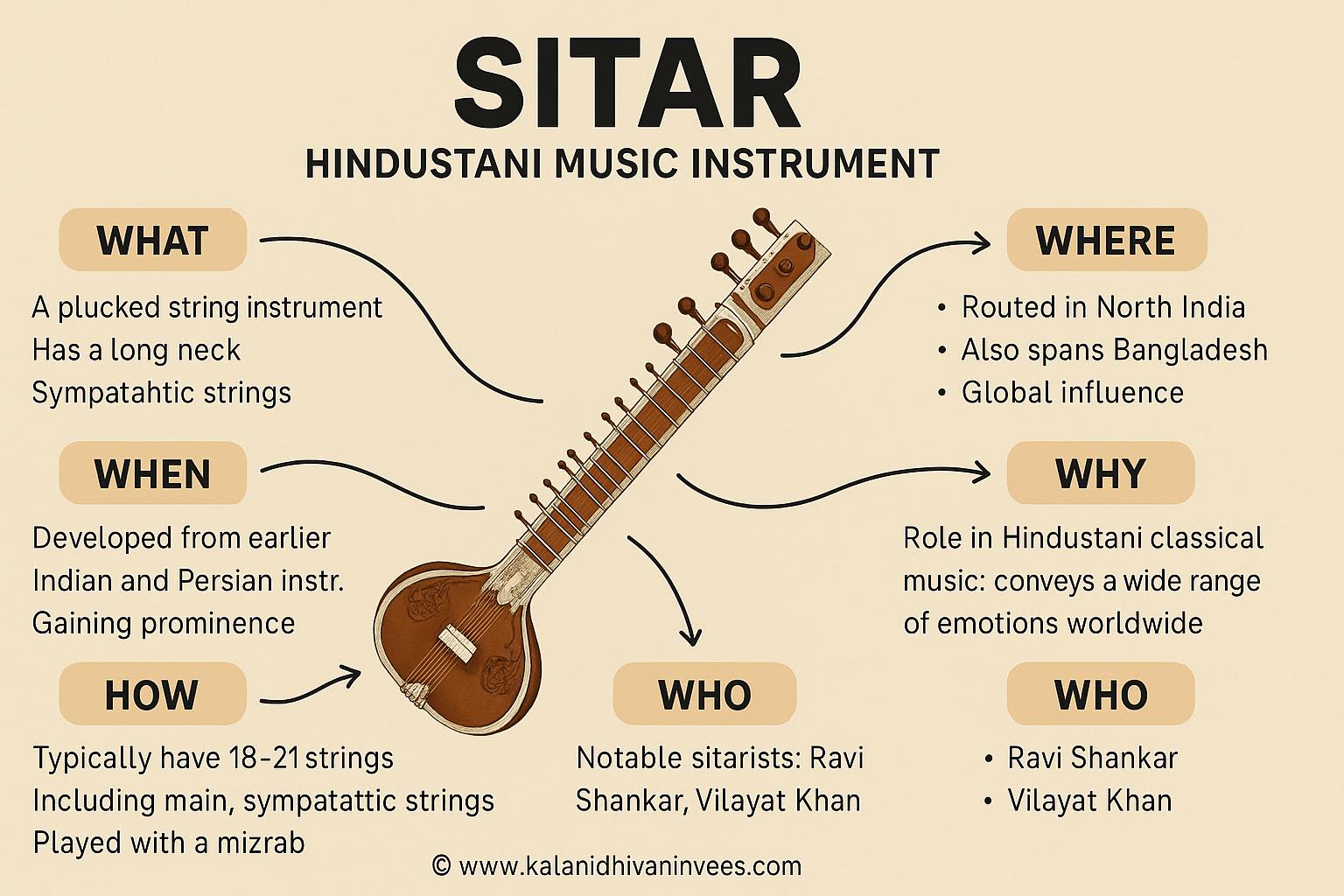Now Reading: Sitar – The Soul of Hindustani Classical Music
-
01
Sitar – The Soul of Hindustani Classical Music
Sitar – The Soul of Hindustani Classical Music

• Sitar: A plucked string instrument of Hindustani classical music, known for its resonant sound.
• Sympathetic Strings (Tarab): Additional strings that vibrate sympathetically, enriching the resonance.
• Gourd (Tumba): The resonating body of the sitar, traditionally made of dried pumpkin.
• Meend: A sliding ornament between notes, achieved on the sitar by pulling strings across curved frets.
• Gharana: A lineage or school of musical style within Indian classical tradition.
Imagine the quiet dawn of a North Indian courtyard in the 18th century. A young musician lifts the long-necked instrument, plucks its steel string, and the note lingers in the air like a silken thread. The sitar was not just born as an instrument but as a bridge—between Indian and Persian sounds, between meditation and performance, between tradition and global recognition. From Mughal courts to Woodstock, it has been both a spiritual companion and a cultural ambassador.
⸻
Sections
– The Instrument
The sitar is a plucked string instrument belonging to the lute family. It is the quintessential symbol of Hindustani classical music. With its long, hollow neck and sympathetic strings, it produces a layered, shimmering resonance that no other instrument can replicate.
⸻
Its Origins
The sitar emerged around the 18th century, evolving from earlier Indian and Persian stringed instruments like the veena and setar. It gained prominence during the Mughal era, becoming a courtly as well as devotional instrument. By the 20th century, maestros like Pt. Ravi Shankar brought it onto the global stage.
⸻Cultural Geography
Primarily rooted in North India, the sitar has also spread to Pakistan and Bangladesh, shaping regional music. In the global sphere, it has influenced genres from jazz to psychedelic rock, thanks to cross-cultural collaborations in the 1960s and beyond.
⸻Its Significance
The sitar holds an integral role in Hindustani music because of its expressive range. It can evoke meditative calm, fiery excitement, or romantic longing. Its sound—ethereal yet commanding—has come to symbolize Indian classical tradition worldwide.
⸻Its Construction and Playing
A traditional sitar has 6–7 main strings and 11–13 sympathetic strings. Its frets are curved and movable, enabling complex ornamentations like meend (glides), gamaka (oscillations), and murki (quick flourishes). The instrument is played with a wire plectrum called mizrab, worn on the index finger.
⸻The Practitioners
From court musicians to modern-day maestros, sitarists have shaped its journey. Legendary figures include Ustad Vilayat Khan, Pandit Ravi Shankar, Ustad Imrat Khan, and Anoushka Shankar, who have carried forward different gharanas and styles. Today, it is studied by countless learners across India and the world, preserving and expanding its legacy.
⸻
Conclusion
The sitar is more than wood, strings, and gourds—it is a vessel of India’s artistic soul. Whether in the silence of a raga meditation or the electrifying energy of a world concert, it continues to unite audiences across time, geography, and culture. Its voice speaks of timelessness, of continuity, and of the ever-expanding language of music.
⸻
























